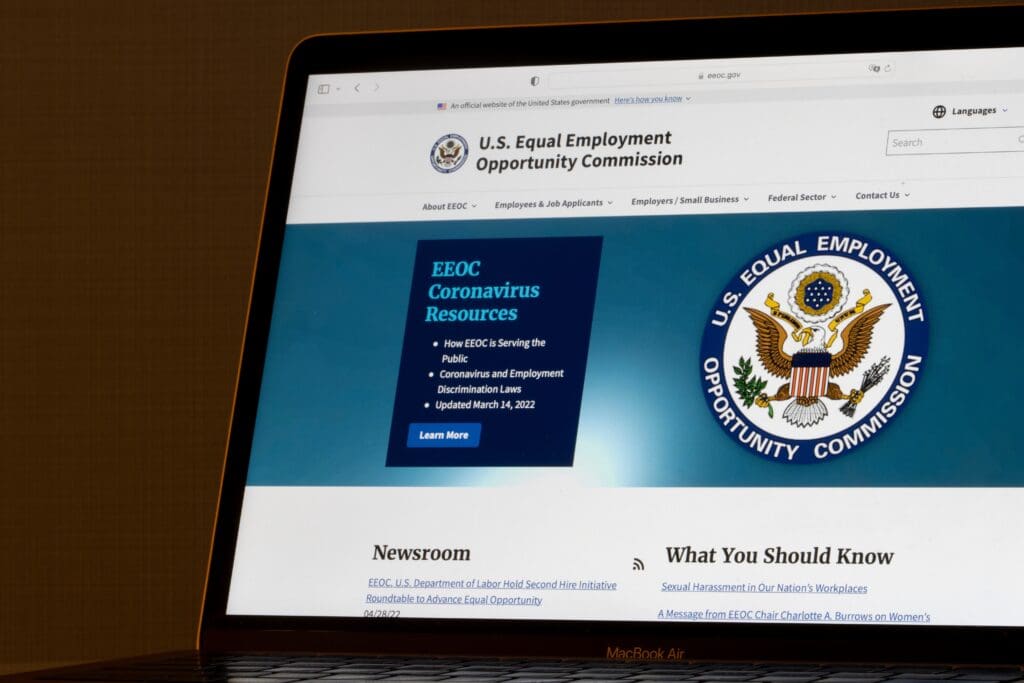In a rapidly changing work environment, understanding these five regulatory issues will help HR maintain compliance.
By Pamela Lacy
Following a year that introduced new challenges for HR professionals, including navigating The Great Resignation and introducing and improving resources to support employee well-being, 2022 is poised to present new and unforeseen obstacles.
One thing that is certain is that the COVID-19 pandemic will continue to impact the way employees work. With this will come the continued evolution of compliance obligations intended to protect worker safety and equity.
It’s important for HR leaders to stay informed about what’s on the horizon with new regulations changing rapidly and being introduced across federal, state, and local governments. Here are five regulatory issues that executives should be closely monitoring in the year ahead.
1. Workplace safety. Litigation, as well as some state Occupational Health and Safety Administrations (OSHA) and labor departments, have created challenges and compliance complexities for businesses beyond the normal requirements for workplace safety.
On January 13, 2022, the United States Supreme Court ruled against the federal OSHA COVID-19 Vaccination and Testing Emergency Temporary Standard (ETS), blocking previous actions that would have required businesses with 100 or more employees to follow specific compliance regulations and deadlines regarding COVID-19 policies. This decision will likely require further review by the U.S. Court of Appeals and potentially the Supreme Court again. However, given that this is a hot button topic, many employers may implement personal safety plans to protect the health and well-being of employees. HR leaders will play a key role in implementing safety measures, issuing plans, and communicating with employees.
All of this comes at a time when business leaders have invested money to adapt their workplaces to previous COVID-19 safety regulations that are still visibly apparent – dividers separating employees and customers at a counter, stickers and placards denoting the number of individuals who can sit at a table, and remodeled offices.
2. Paid leave. Paid leave, particularly the legislation passed and workplace policies that were developed during the COVID-19 pandemic, has the potential to have the most-lasting impact on businesses and their employees. COVID-19-related paid family and sick leave legislation that was enacted at the federal level in 2020 – and has since expired in 2021 – was also passed in a variety of forms by many state and local jurisdictions. At one point during the pandemic, as many as 20 counties and cities in
California alone (Long Beach, Oakland, the city and county of Los Angeles) put paid leave laws on the books. Many state and local mandates that cover paid sick time, family leave, and vaccination leaves are expected to continue into 2022.
Keeping track of requirements under applicable laws and how such laws overlap can be complex. Employers should prioritize developing and implementing workplace paid time off policies that comply with applicable leave laws and fit their business needs.
3. Healthcare reform. Employers must ensure the furnishing and filing of timely and correct information returns related to Affordable Care Act (ACA) Employer Shared Responsibility (ESR) reporting to avoid risk of information reporting penalites. The good faith transition relief from penalties for incomplete or incorrect returns was discontinued, beginning with the 2021 tax year. With proposals to temporarily lower the affordability rate under consideration, Applicable Large Employers (ALEs) might need to reevaluate employee health insurance contributions and determine if adequate affordable coverage is being offered to full-time employees.
4. Pay equity. The Biden administration issued its National Strategy on Gender Equity and Equality calling for continued accountability and engagement on issues such as pay equity. In 2020, according to the U.S. Department of Labor (DOL), women earned only 82.3% annually of the earnings made by men.
Some states and cities including Colorado have begun to address the issue of the pay equity gap with wage disclosure laws and salary history bans and an increased focus on reporting requirements designed to highlight and mitigate gender and other types of discrimination impacting pay.
Additional legislative action and potential judicial review at the federal and state level is expected, so businesses should stay on top of any developments. Employers should also consult with their legal counsel to ensure that their compensation packages, hiring practices, and retention efforts support pay equity and comply with applicable laws.
5. Worker classification. In 2021, the US Department of Labor withdrew the prior administration’s final rule designed to simplify the classification of workers as independent contractors, leaving open the possibility that the agency might be looking to propose a new rule. Such a rule could expand the number of workers considered to be employees under the Fair Labor Standards Act (FLSA), so employers need to monitor the regulatory agenda, legislative developments, and court challenges, including those involving the classification of certain app-based workers. Lawsuits and state-level ballot initiatives addressing worker classification are expected.
Organizations will continue to be challenged in their efforts to comply with multiple laws and agency guidance when determining worker status, applying wage and hour and tax laws, or eligibility for fringe benefits, not to mention the risk of penalties for worker misclassification.
HR professionals have become an invaluable part of leadership teams and can provide specific insights to help guide the organizational approach to employee policies. To do so, it is important to stay up-to-date on the latest issues facing the workforce, and how their organizations can pivot to address them successfully. The five aforementioned points provide a good start for how to think about HR in the coming months, but it is equally important to be flexible as new situations and legislation arise.
Pamela Lacy is human resources coach for Paychex Inc.
Note: The information contained within is not tax or legal advice. These issues are complex, and applicability depends on individual circumstances. Businesses should consult tax or legal counsel before taking action on any of the items identified above.














